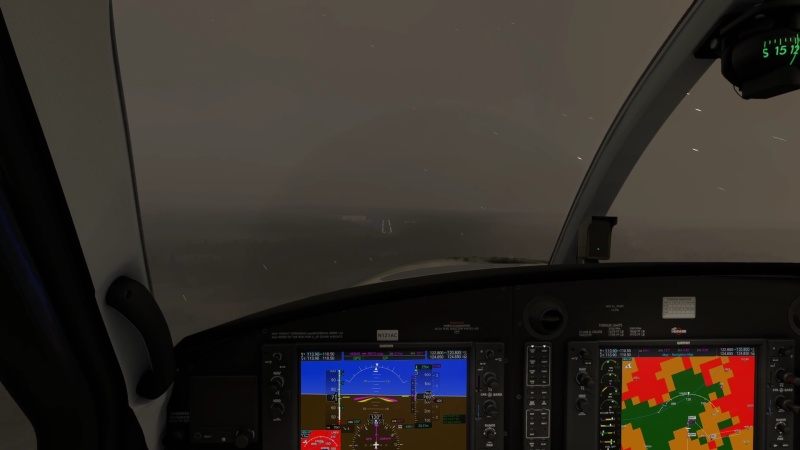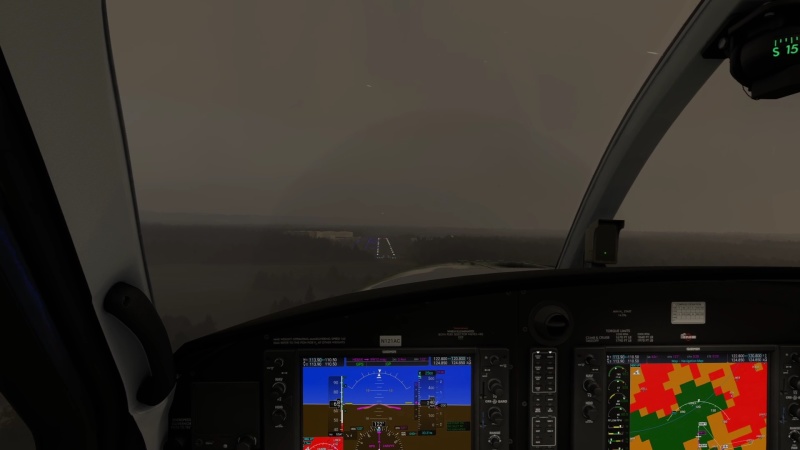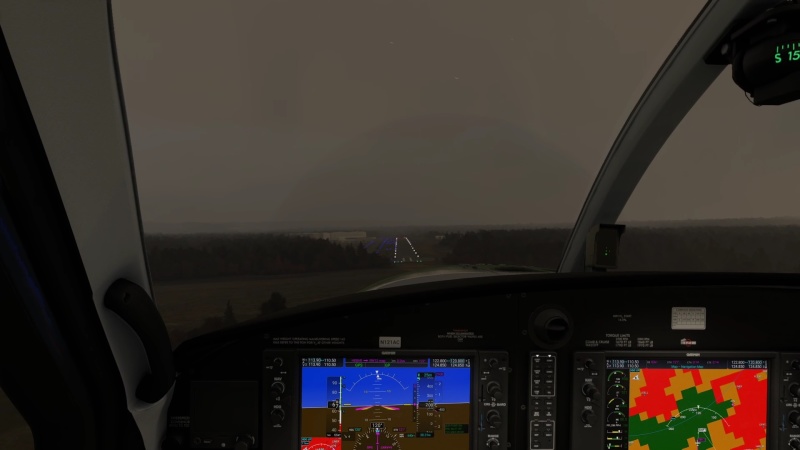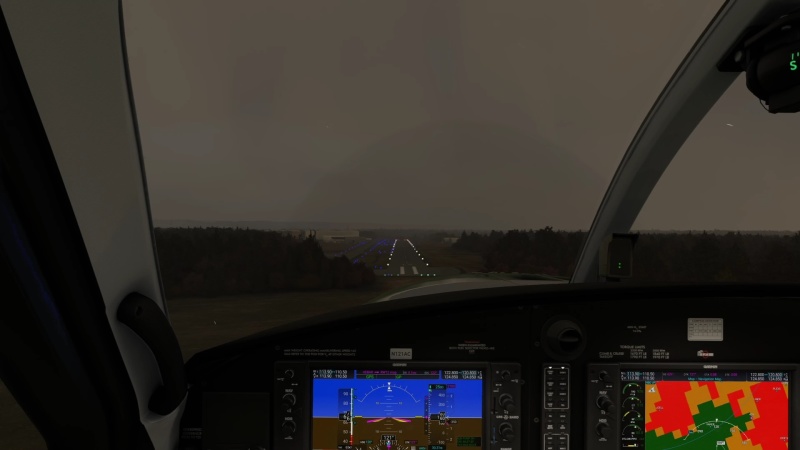I flew an IFR flight in the sim a few days ago, in New York, from KFRG - KSMQ. I couldn’t help but notice that the weather depiction and, significantly, the blending of live METAR data and model data, was really well done. I’m hoping this means there is back-end work occurring, improving this. (I’m not on the SU8 beta.)
Weather in the area was messy, with a large wave of showery precip pushing into the northeastern U.S., a mix of rain and snow. Once I broke out on top of the low layer, things looked as you’d expect on such a day - a broken to overcast layer, with embedded towering cu where the showers were:
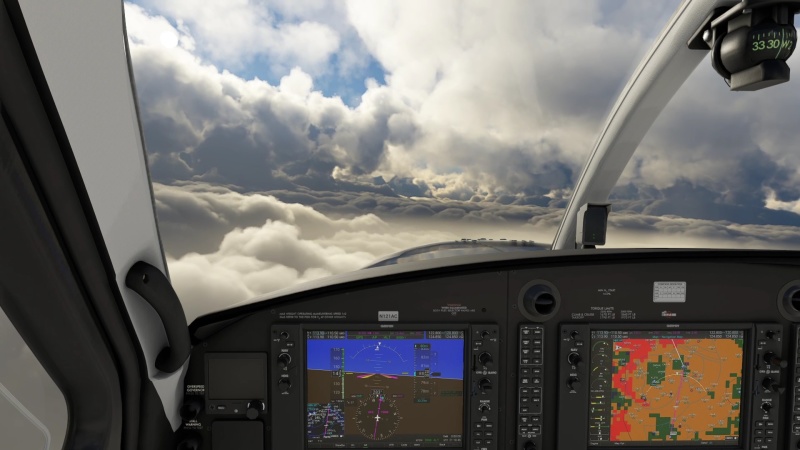
As I proceeded southwest into the approaching front, precip coverage became denser, with corresponding precip fog lowering visibility in many places. This matched with real-world radar at the time; however here’s what I found interesting: several of the METARs in the area at the time indicated better vis than surrounding areas, with only light precipitation on the field. This is expected during an unstable airmass / showery precip event; some places will have pretty low weather, and others will be better. Note the weather depiction in the sim:
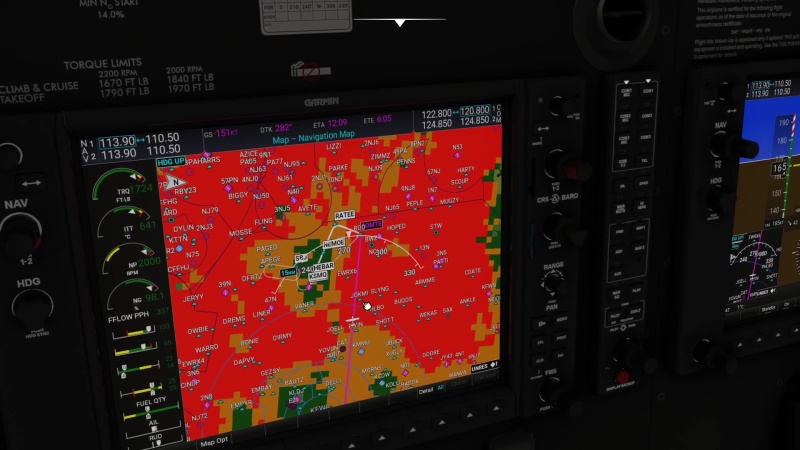
You may have to enlarge that image, but you can see that my destination airport is in a “hole” in the precip; an area of lighter precipitation. If you look at the bottom of the MFD, you can see that Newark (KEWR) and Essex (KCDW) are in similar areas of lighter precip. In all three cases, real-world METARs indicated 4-6SM vis in light rain or snow (better than the 1-2SM in moderate RA or SN in other places.)
But you’ll also note that these regions are not perfectly round “bubbles;” the reporting airport is simply within a realistically irregularly shaped area of lighter precipitation. The airport is not centered within this area either, interestingly.
The most interesting thing was how this played out visually on approach. There were no hard transitions of weather; I simply flew into a gradually improving region of lighter rain/snow and improving visibility. Here’s a few screenshots, but you really have to see the video to appreciate the smoothness of it:
Video here; the last few minutes show the breakout:
I’m hopeful that this indicates they’re making inroads on blending METAR data with model data, and providing seamless visual transitions in the weather. On this particular flight, I really can’t see how it could have been done any better.
